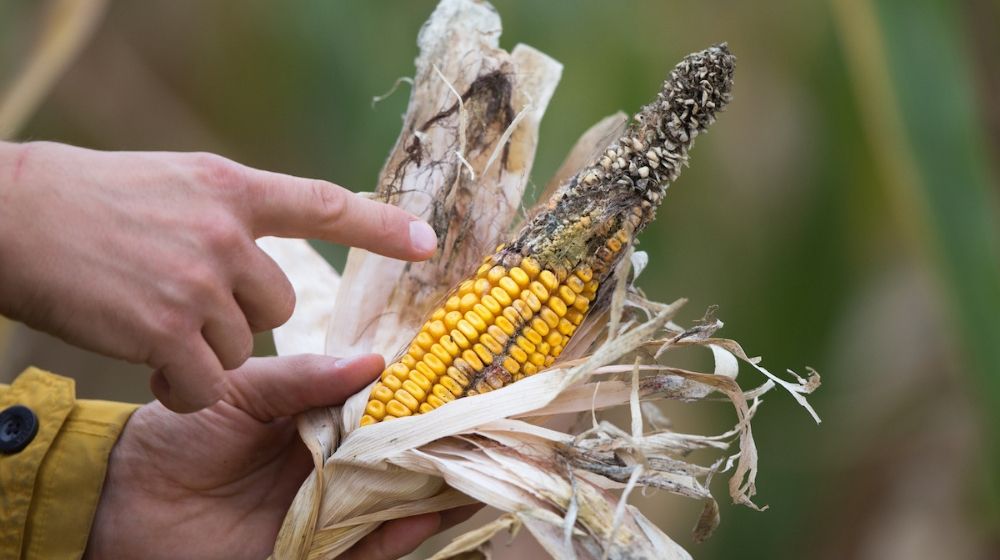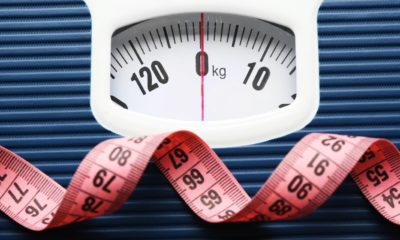Food
Will Aflatoxins Pose Serious Health Risks to Humans and Livestock?

Milk have always been an important source of calcium and protein for the human, while different contaminants such as aflatoxin can be found in milk mostly due to high aflatoxin exposure through livestock feed, now the question arises that does it pose a serious health threat to humans and livestock?
Aflatoxins are poisonous carcinogens and mutagens that are produced by certain molds (Aspergillus flavus and Aspergillus parasiticus) which grow in soil, decaying vegetation, hay, and grains. They are regularly found in improperly stored staple commodities such as cassava, chili peppers, cottonseed, millet, peanuts, rice, sesame seeds, sorghum, sunflower seeds, sweetcorn, tree nuts, wheat, and a variety of spices.
When contaminated food is processed, aflatoxins enter the general food supply where they have been found in both pet and human foods, as well as in feedstock for agricultural animals. Animals fed contaminated food can pass aflatoxin transformation products into eggs, milk products, and meat.
In a recently broadcasted TV show, it was announced that dietary products are contaminated with aflatoxin calling on the public to resist milk consumption.
With playing an inevitable role in food pyramid worldwide, avoiding milk is nearly impossible, so it raised people’s concern and many started to join the controversial issue.
When a farmer treats their field with @Aflasafe, at the right time and the right dose (10 kg/ha), as well as follows good agricultural practices, the crop at harvest will have 80% to 100% less aflatoxins. https://t.co/f4zsHljEB8#Aflasafe #EndAflatoxin
— IITA (@IITA_CGIAR) February 6, 2020
Iran’s Aflatoxin Level Not Above Global Average
Payam Mohebbi, a veterinary physician, told the TEHRAN TIMES on Tuesday that milk or any dietary products can be contaminated with antibiotics, hormones, parasiticides, pesticides, insecticides, heavy metals, and aflatoxin mold.
Although aflatoxin is harmful, the presence of aflatoxin molds does not prove serious health threats and it highly depends on the level of contaminant, he stated.
Following prolonged exposure to a high-humidity environment, livestock food can be contaminated during storage or even before harvest, he noted, adding, Iran Veterinary Organization have long been making efforts in minimizing milk exposure to aflatoxins.
To do so, they have strictly controlled and supervised the milk factories and even livestock food. So, over the past 30 years, milk contaminants have highly decreased, he explained.
Organic crops or not pasteurized dietary products may be more susceptible to contamination with aflatoxins, he said.
Mohebbi went on to state that however, the responsible bodies accurately evaluate the performance of various milk collection centers and pasteurized milk factories to ensure the health of their products by periodically monitoring and sampling contaminant levels as well as the amount of aflatoxin.
Currently, countries worldwide have standards for aflatoxin levels in food and feed, in Iran, safe exposure levels for aflatoxin has been defined as a maximum of 10 µg/kg (a µgram is one millionths [1×10-6] of a gram), totally compliant with Codex standard, he noted.
The Codex Alimentarius Commission (set to create harmonized international food standards to protect the health of consumers and ensure fair trade practices), has also set the maximum levels for aflatoxins in food, nuts, grains, dried figs and milk are in the range of 0.5 to 15 µg/kg.
European Union has established the allowable levels of aflatoxin in foods as a4 µg/kg to 10 µg/kg.
“So, Iran’s standard is not above the global limits, he highlighted, adding, and the state TV should not have announced such a sensitive issue and raise concern over the huge industry.
Milk is totally safe and there is no health threat for the people provided that it is pasteurized by valid factories, he emphasized, calling on people to avoid raw milk,” he said.
Kenya has made a major step forward towards its fight against aflatoxins. These are poisons that affect our major staple – maize. The poisons pose grave health risks to both human and animals leading to instant death in high levels of exposure. pic.twitter.com/MJrWM4vNMr
— Hon. Mwangi Kiunjuri, EGH, MGH. (@Hon_Kiunjuri) June 16, 2018
Acute Poisoning Can Be Life-threatening
According to the World Health Organization, large doses of aflatoxins lead to acute poisoning (aflatoxicosis) that can be life-threatening, usually through damage to the liver. Outbreaks of acute liver failure (jaundice, lethargy, nausea, death), identified as aflatoxicosis, have been observed in human populations since the 1960s.
Most recently deaths attributed to aflatoxins were reported during the summer of 2016 in the United Republic of Tanzania. Adults are more tolerant to acute exposure than children. The consumption of food containing aflatoxin concentrations of 1 mg/kg or higher has been suspected to cause aflatoxicosis.
Based on past outbreaks it has been estimated that when consumed over a period of 1–3 weeks, an AFB1 dose of 20–120 µg/kg bw per day (µgram is one billionth [1×10-9] of a kilogram) is acutely toxic and potentially lethal.
Our experts re- assessed human health risks related to the presence of #aflatoxins in food.
Find out more: ➡️https://t.co/ctTszEAaGU pic.twitter.com/RbFGnUHo4p— EFSA (@EFSA_EU) March 11, 2020
Milk Consumption Reduction can Hurt generations
Elsewhere in his remarks, Mohebbi insisted on the importance of milk in healthy generations, saying that milk consumption reduction can hurt the whole population, as it initially harms women who are playing the society’s most vital role as motherhood.
Calcium is of great importance in both adult and infants body, and if mothers are not provided with a good source of calcium there will be deficiencies in the next generations, he explained.
“Over the Iran–Iraq War (1980-1988), due to certain conditions in the country people have decreased milk consumption, and the consequences appeared 30 years later when an unprecedented growth reported in osteoporosis prevalence among women.
The disease is currently reduced compared to that period, and it demonstrates that milk quality has improved,” he noted.
According to a study done in the Iranian calendar year 1390 (March 2011-March 2012), Iranians consumed 190 ml, less than one glass of milk, of dairy per day, while the recommended use of milk per day is minimum 250 grams to maximum 450 grams.
According to global statistics in 2016, the per capita dairy consumption in Iran was 27 liters while the figure was 125 liters in Ireland and 120 liters in Finland.
Why is Dairy so Important?
According to the Food and Agriculture Organization of the United Nations (FAO), milk is a major source of dietary energy, high-quality protein, and fat. It can make a significant contribution to meeting the required nutrient intakes of calcium, magnesium, selenium, riboflavin, vitamin B12, and pantothenic acid. Milk from some animal species can also be a source of zinc and vitamins A, C, D, and B6.
Milk and dairy products can be important in diversifying the diet. They are nutrient-dense and provide high-quality protein and micronutrients in an easily absorbed form that can benefit both nutritionally vulnerable people and healthy people when consumed in appropriate amounts. It is important to recognize that a combination of food is necessary for a healthy diet and that milk and dairy products are not the only sources of essential nutrients.
The critical window for adequate child growth and cognitive development is between conception and 24 months of age and hence many recent international nutrition initiatives focus on the first 1000 days. The components of milk that are thought to be particularly important to supporting child growth are protein, minerals, and lactose.
There are no global recommendations for milk or dairy consumption. Most countries recommend at least one serving of milk daily, with some countries recommending up to three servings per day. Currently, many national and international bodies recommend consumption of lower-fat dairy foods for developed/high-income countries to address the problems of overweight and obesity.
(c) 2020 TehranTimes. All Rights Reserved. Provided by SyndiGate Media Inc. (Syndigate.info).












